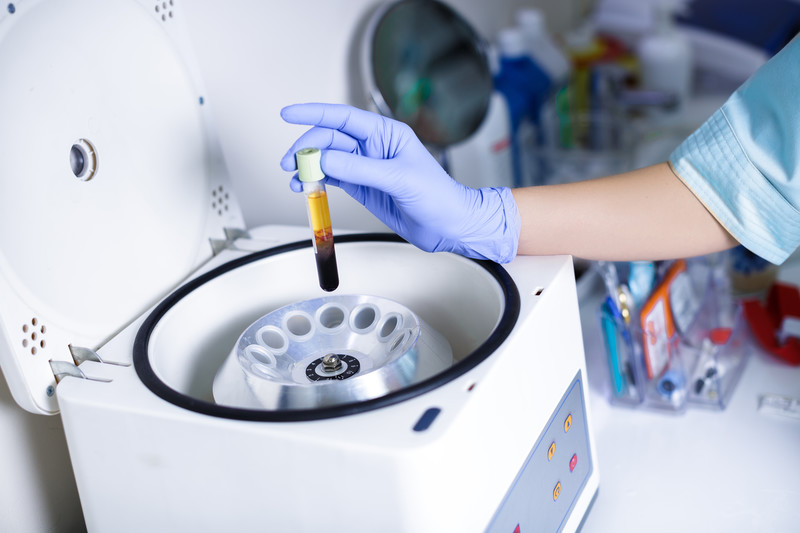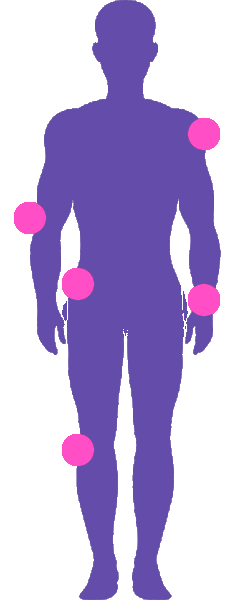Platelet Rich Plasma
Platelet rich plasma, or PRP, is a revolutionary and conservative approach to treating many orthopedic conditions. PRP promotes the healing of tissue that has been injured or worn down over years of use. This technique has made it possible to avoid surgery, avoid missing work, and return to normal activity sooner because post-injection protocols encourage mobility.

Reduce pain, prevent injury, and be well with PRP
Knee
Osteoarthritis
Rheumatoid Arthritis
Chondromalacia
Meniscal tear
ACL/LCL/MCL injuries
Patellar tendonitis
Knee bursitis
Quadriceps tendonitis
Fracture care
Hip
Osteoarthritis
Labral tear
Bursitis
Tendonitis
Osteonecrosis
Chondromalacia
Fracture care
Shoulder
Osteoarthritis
Chondromalacia
Rotator cuff tendonitis
Partial rotator cuff tears
Labral tears or degeneration
Fracture care
Elbow & hand
Tennis & golfer’s elbow
Thumb arthritis
Partial tears
Tendonitis
Osteoarthritis
Chondromalacia
Fracture care
Ulnar Collateral Ligament (UCL) injury

The breakdown
What is the composition of PRP?
PRP is a concentration of your own blood platelets. Blood is composed of plasma (55%) and formed elements (45%) such as white and red blood cells as well as platelets. In a normal blood sample, platelets make up about 1% of the blood volume overall.
Platelets have significant healing properties and are the basic framework of cells that damaged tissues use to regenerate around. These cells have the capability to transform themselves into the exact kind of tissues that they are aiming to heal- which is precisely the idea when Beyond Biologics™ concentrates platelets from the patient’s own blood into a fluid that can be injected directly to the site of injury.
Process
01 Preparation
To obtain PRP, blood is drawn from the patient’s arm into a test tube. The test tube is placed in a specialized centrifuge that spins the blood fast enough to separate it into layers. Heavier parts like red blood cells stay on the bottom, while platelets and white blood cells come to rest above the red blood cell layer. Lighter particles make up the top layer.
02 Injection
Once the patient’s blood has been separated, the layer that contains the healing PRP is extracted and immediately prepared for injection to the injured area. Generally, the injection can take place as quickly as 30 minutes after the blood has been drawn. Beyond Biologics™ injects the extracted PRP directly into the injured area using ultrasound guidance so that healing can begin.
PRP injections
Key benefits of PRP treatment
DECREASED RISK VS. SURGERY
Since PRP injections are a conservative approach and no incisions are required, bleeding, infections, and post-procedure complications are extremely rare–especially compared to surgery. The procedure is safe for all age groups, genders, and levels of activity. It is also safe for patients with interfering medical conditions.
PAIN RELIEF & IMPROVED FUNCTION
Platelets release bioactive proteins that enhance tissue regeneration and healing. This leads to better outcomes and a faster healing time for patients, with none of the downtime associated with surgery. As an effective pain relief treatment and promoter of faster healing, PRP often improves the function of the injured area beyond what the patient thought possible. It also can eliminate the need for surgery and prolonged recovery.
OUTPATIENT PROCEDURE
All Beyond Biologics™ PRP injections are performed in a comfortable office setting. Patients are fully conscious during the procedure, which eliminates significant risks as well as the costs associated with anesthesia. Since PRP injections are a non-surgical treatment option, procedures can take as little as 30 minutes.
LESS COSTLY THAN SURGERY
Compared to a typical surgery for an orthopedic injury, a PRP injection procedure at Beyond Biologics™ offers patients significant savings. For one thing, patients are spared the hidden costs of facility fees and anesthesia. Additionally, since PRP is a non-surgical treatment with very little risk of complication, there is no need for patients to rack up fees by staying overnight in a hospital.
NATURAL HEALING
PRP injections promote tissue repair by harnessing the body’s natural healing process. Nothing synthetic is added to the body, merely the patient’s own platelet cells. These platelets, once activated, release growth factors several of which have been identified in the body’s own healing cascade. This technology simply takes advantage of the body’s own mechanism for healing by capturing it and focusing it precisely where it’s needed most.
PRP injection for basilar thumb (CMC joint) arthritis
Results from an ongoing study presented at the AAOS Annual Meeting indicate that platelet rich plasma (PRP) injections may be an effective nonsurgical treatment option for carpometacarpal (CMC) joint osteoarthritis (OA)
Our findings showed that PRP injections were associated with pain relief; increased function in activities of daily living; increased grip, key, and pinch strengths; and increased MP joint flexion, compared to corticosteroid injection,” said coauthor Marie Badalamente, PhD.
The regenerative action of growth factors, contained in platelet alpha granules, upon articular chondrocytes may be a potential mechanism for these positive effects.
Dr. Badalamente’s coauthor of “A Comparative Study of Platelet Rich Plasma (PRP) vs. Corticosteroid Injections in Patients with Carpometacarpal Joint Osteoarthritis” is Samantha Muhlrad, MD.
For more information, click here
Testimonials
Answers
Frequently asked questions about PRP injections
What happens during the PRP procedure?
Once the PRP is prepared, it is injected into the injured area (such as a tendon, muscle, cartilage, joint, or bone.) Depending on the area of injury, imaging or ultrasound may be used to place the needle directly into the joint or area of injury. During the process, the patient is not asleep or anesthetized. Pre-procedural medication may be prescribed on an individual basis.
What happens after the PRP injection procedure?
Following the injection, patients may experience slight discomfort in the area of the injection that can last for a few days or up to a week. Although it can seem like the injury actually feels worse than it did before the treatment, it is important to remember that there is a good reason for that— the injection triggered an inflammatory response that is quite normal and is essential for the healing process.
Once the patient returns home, it is typical to ice the injected area for pain relief or to limit activities as much as needed. Beyond Biologics™ generally suggests using Tylenol or a prescription pain reliever. Ibuprofen or other NSAIDs including Motrin or Advil are not advised, as these are “anti-inflammatory” and may interfere with the healing response. Some providers will recommend avoiding heavy or repetitive physical activity with the treated body part for up to a week to allow the healing to occur.
What can I expect during recovery from PRP injections?
Patients are often surprised by the speed of recovery they experience after PRP injections. Many patients report being pain free following the procedure, and patients have also reported using less pain medication and gaining greater joint motion. Overall, patients get back to regular daily activities with greater speed and ease than they otherwise would with surgery or other treatments.
Beyond Biologics™ often recommends stretching and strengthening exercises for the patient to perform after the injections as part of a home exercise program. Gentle stretching for the muscles around the injected area can usually be started nearly immediately after the injection; however, strengthening exercises and other forms of exercise involving the area will not begin immediately as the tissue requires healing time after the injection before being heavily stressed.
For athletes, sport-specific exercises, such as throwing or simulated sport drills will be gradually encouraged as soon as possible to prepare you to return to your desired sport. Others may require a home exercise plan before returning to a full occupational workload or duties of the home such as gardening or housecleaning. For athletes and non-athletes alike, your provider will discuss the most appropriate return-to-sport or activity plan for you after a PRP injection and will advise you on the acceptable level of activity at each stage of your rehabilitation process.
What conditions are treated with PRP therapy?
PRP therapy is effective in treating chronic tendon injuries such as tennis elbow and ligament and muscle injuries such as plantar fasciitis. It can also slow or halt the progression of chronic degenerative diseases like osteoarthritis. In fact, a recent study showed PRP to be more effective at treating thumb arthritis than more traditional cortisone injections. To know if PRP therapy is the right treatment for you, contact Beyond Biologics™ and arrange a consultation.
How do I know if I am a good candidate for PRP?
The best way to know if you are a candidate for PRP therapy is to contact Beyond Biologics™ and arrange a consultation. Generally, there are no age or activity-level restrictions on patients seeking PRP injections. Beyond Biologics™ regularly consults patients about their options to treat pain and injuries with regenerative medicine. Patients often come to Beyond Biologics™ after having been recommended surgery or joint replacements by other doctors.
How long does it take for PRP treatment to work?
Most Beyond Biologics™ patients are able to return to work or continue on with their day following the procedure. Some patients notice improvement by 2 to 6 weeks after the PRP treatment. However, there are factors that can affect the treatment’s efficacy such as the type and site of injury or pain. Most chronic tendon injuries that have failed to respond to any other type of traditional treatment may take a number of weeks to heal, while PRP injections into joints and acute muscle injuries may show improvement sooner.
WHAT IS THE COST OF A PRP TREATMENT AND DOES INSURANCE COVER PRP THERAPY?
Many insurance plans do not cover regenerative therapies such as PRP therapy. Unfortunately, this means that patients often pay for treatment out-of-pocket. Though the out-of-pocket expenses are not ideal, injection therapies cost vastly less than the surgical alternative. To get an idea of what your treatment would cost, it is best to contact Beyond Biologics™ directly.
Contact Beyond Biologics™ for innovative regenerative therapy
Fill out the form below and Beyond Biologics™ will return your inquiry within one business day


